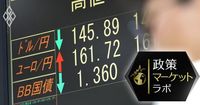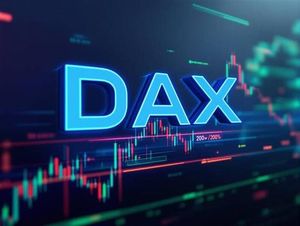The global financial markets are in turmoil following a dramatic plunge in the US stock market, where the Dow Jones Industrial Average dropped by 2,231.07 points (5.50%) to 38,314 dollars, and the Nasdaq fell by 962.82 points (5.82%) to 15,587 points. This unprecedented decline has sent shockwaves through markets worldwide, leading to panic selling in Tokyo, where the Nikkei average futures triggered a circuit breaker after plummeting over 2,900 yen.
On April 2, 2025, President Donald Trump announced a sweeping "reciprocal tariff policy," which includes a uniform 10% tariff on all imports, with additional tariffs targeting countries with trade surpluses with the US. China is expected to face a 34% tariff, while the European Union (EU) will see a 20% tariff imposed. In retaliation, the Chinese government announced its own 34% tariff on all imports from the US and filed a complaint with the World Trade Organization (WTO). The EU is also anticipated to announce retaliatory tariffs worth up to 280 billion dollars on US imports in the coming days.
The repercussions of these tariffs have been swift and severe. The US stock market has lost a staggering 8.2 trillion dollars in market value over the past week, surpassing the losses seen during the 2008 financial crisis. This downturn has triggered a bearish sentiment across various asset classes, including cryptocurrencies. Bitcoin (BTC) has dropped by 5.27% to 78,943 dollars, following a brief period of stability compared to the stock market. Analysts note that once Bitcoin fell below the 81,000 dollar threshold, it experienced a rapid decline, with major altcoins also suffering losses of around 10%.
Ki Young Ju, CEO of CryptoQuant, has identified the end of Bitcoin's bull market based on on-chain data. He explains that the "realized capitalization" reflects the actual capital flowing into the market, but the market price is not responding, which is characteristic of a bear market. He stated, "There’s a concept in on-chain data called Realized Cap. It works like this: when BTC enters a blockchain wallet, it's considered a 'buy,' and when it leaves, it's treated as a 'sell.'" Ju further elaborated that despite significant trading activity when Bitcoin was near 100,000 dollars, the price remained relatively stable due to an oversupply of sellers.
Looking ahead, Ju indicates that while selling pressure could ease, a full market reversal may take at least six months, with any short-term rebounds unlikely. This bearish outlook is corroborated by the broader trend in the financial markets, where safe-haven assets like gold are seeing increased interest. On April 4, gold prices fell by 86.3 dollars to 3,035.4 dollars per troy ounce after hitting an all-time high of 3,201.6 dollars earlier in the week.
The financial landscape is further complicated by ongoing fears of high inflation and a potential global recession, spurred by Trump's tariffs and China's retaliatory measures. The Nikkei average recently plunged to its lowest level since August of the previous year, while the Dow Jones Industrial Average saw its lowest point in ten months. Despite some market participants clinging to hopes of a rebound due to anticipated tax cuts and deregulation from the Trump administration, there is a growing consensus that immediate action is needed to halt the "tariff rush" that is wreaking havoc on global markets.
In the foreign exchange market, the dollar has continued its downward trend, exacerbated by the announcement of reciprocal tariffs. As the dollar weakens, gold prices remain elevated, leading to questions about the dollar's status as the world's primary reserve currency. The author of a recent analysis speculates whether the era of dollar hegemony is coming to an end.
As the financial markets brace for further instability, investors are advised to seek safety in government bonds and gold, which have historically performed well in times of economic uncertainty. Major financial institutions have revised their forecasts for gold futures upward, with some predicting prices could reach 3,500 dollars within the year.
In summary, the current financial climate is characterized by heightened volatility and uncertainty, driven by geopolitical tensions and aggressive tariff policies. As markets react to these developments, the focus will remain on how countries respond to the unfolding situation and the potential long-term implications for global economic stability.






